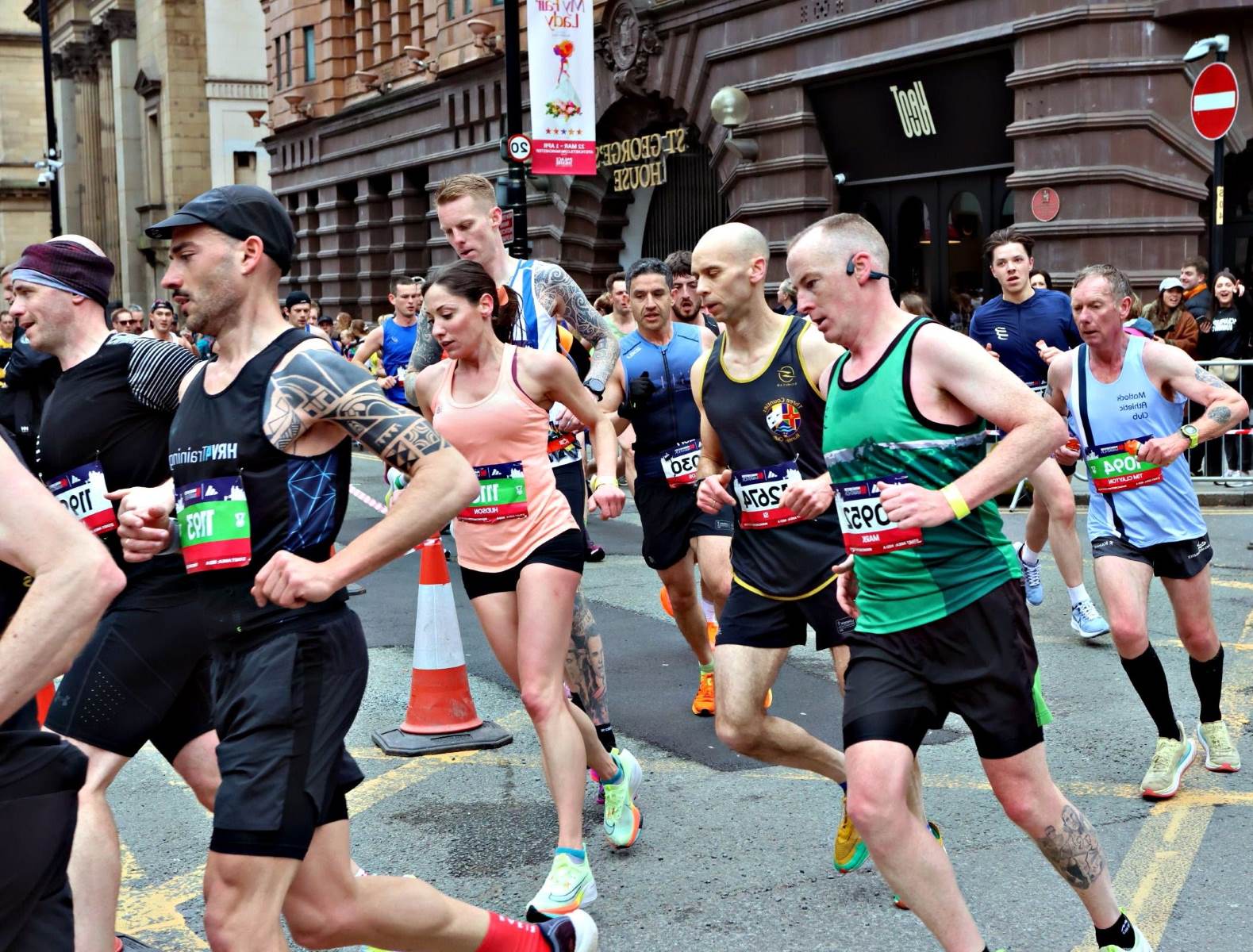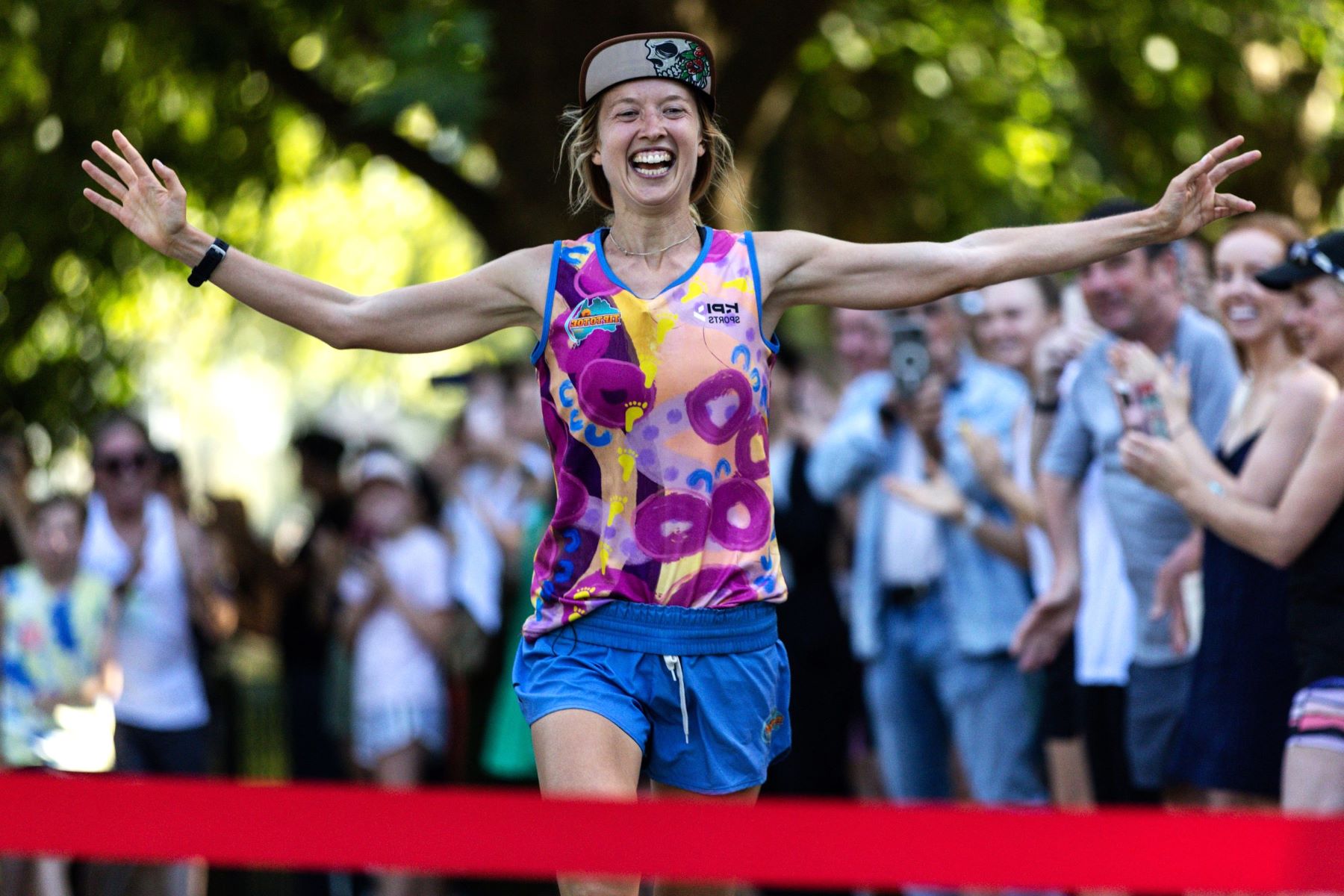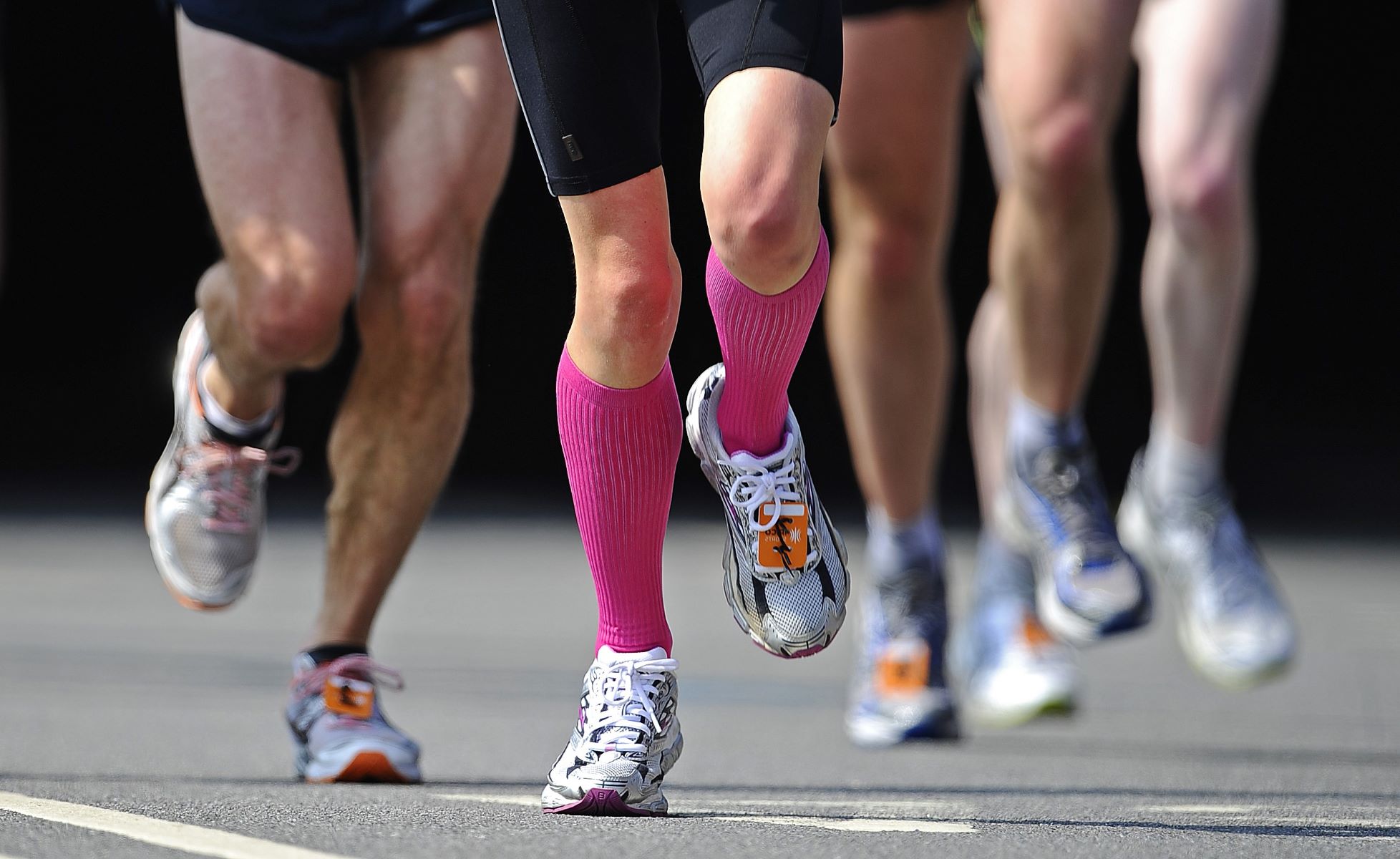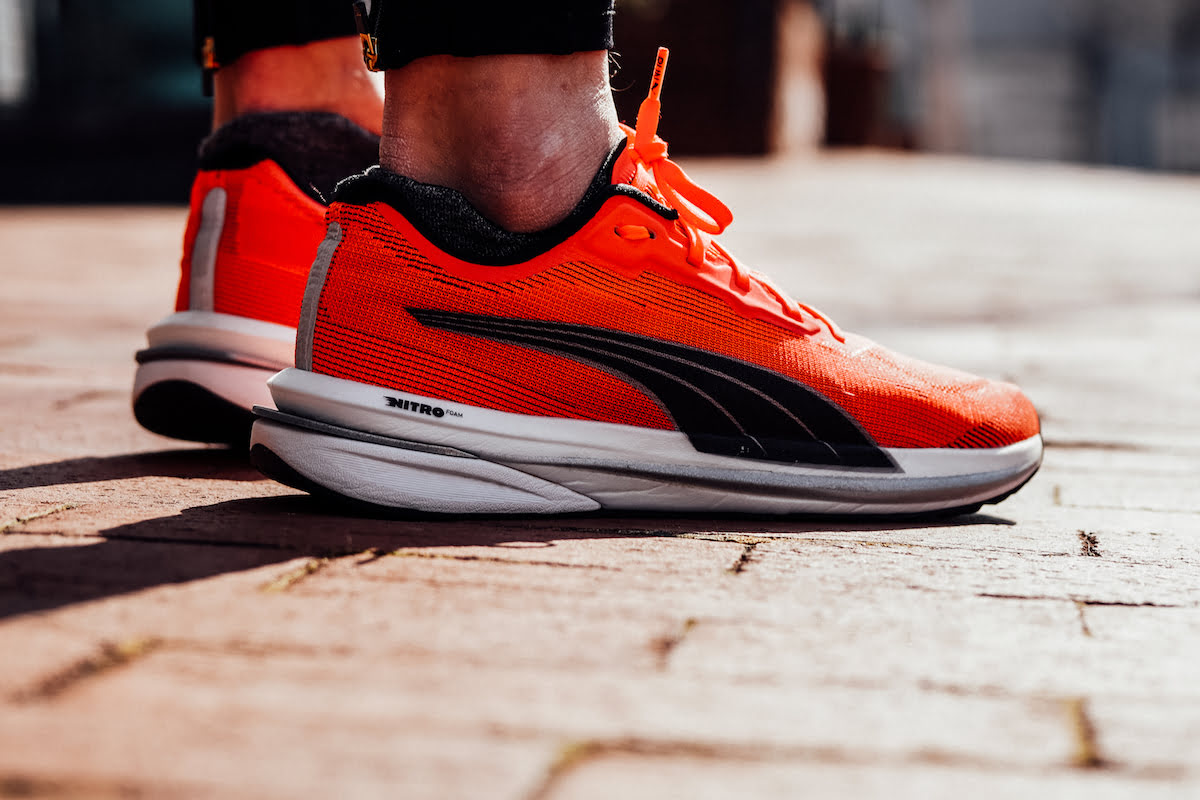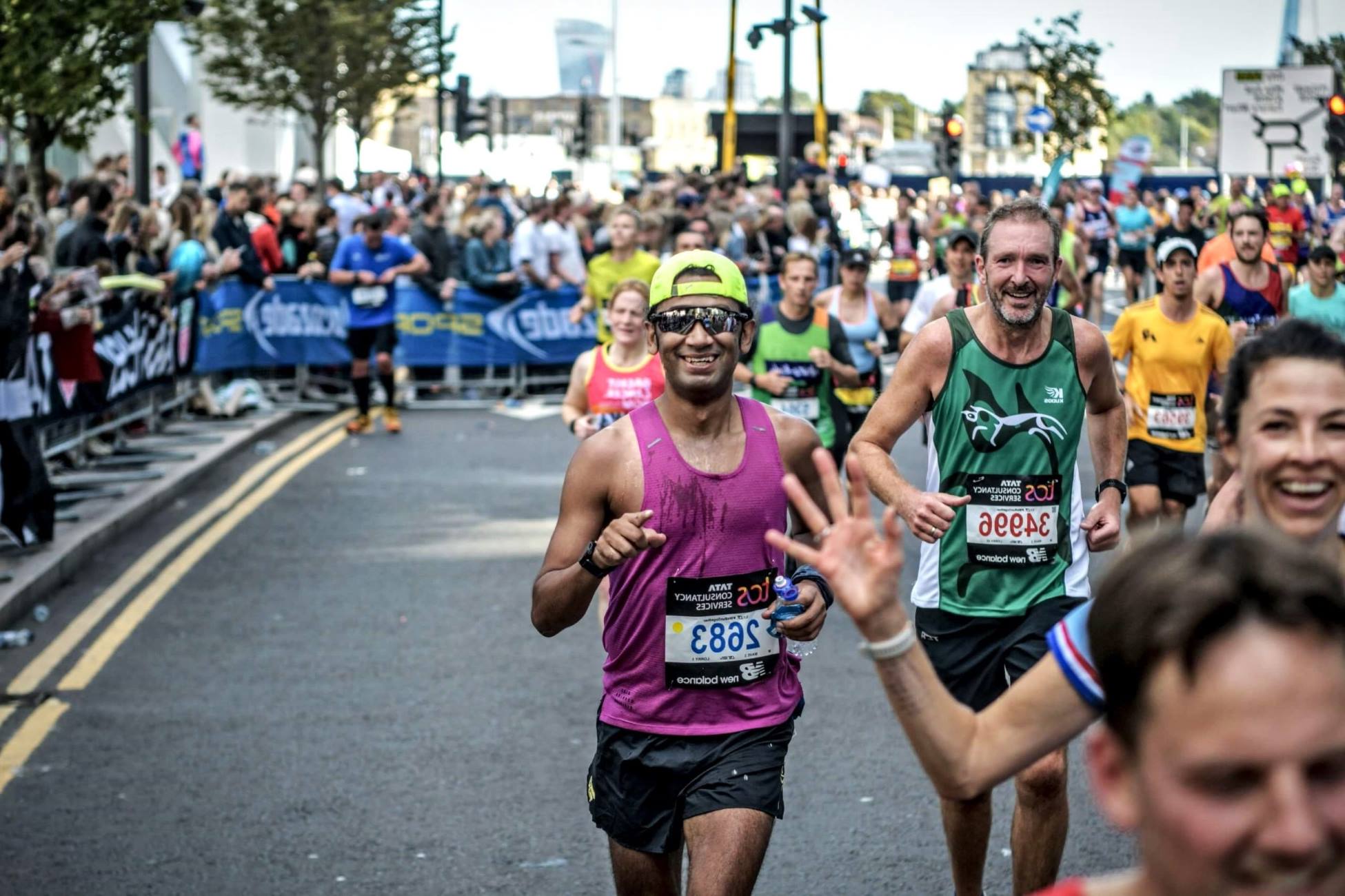Home>Training & Techniques>Unveiling The Enigma: Unraveling The Secrets Of The World’s Swiftest Marathon Runners


Training & Techniques
Unveiling The Enigma: Unraveling The Secrets Of The World’s Swiftest Marathon Runners
Published: March 3, 2024
Discover the training and techniques behind the world's swiftest marathon runners. Unveil the secrets to their success in this comprehensive guide.
(Many of the links in this article redirect to a specific reviewed product. Your purchase of these products through affiliate links helps to generate commission for Therunningadvisor.com, at no extra cost. Learn more)
Table of Contents
- The Evolution of Marathon Running
- The Science Behind Speed: Understanding the Physiology of Elite Runners
- Training Secrets of the World's Swiftest Marathon Runners
- The Role of Nutrition in Achieving Peak Performance
- Mental Toughness: The Psychology of Elite Marathon Runners
- Breaking Down the World's Fastest Marathon Courses
- The Future of Marathon Running: Innovations and Advancements
The Evolution of Marathon Running
Marathon running, a sport that has captivated the human spirit for centuries, has undergone a remarkable evolution. From its humble origins in ancient Greece to the global phenomenon it is today, the marathon has transcended time and culture, leaving an indelible mark on the athletic world.
The marathon's inception can be traced back to the legendary tale of Pheidippides, an Athenian herald who, according to historical lore, ran from the battlefield of Marathon to Athens to deliver news of the Greek victory over the Persians. This heroic feat, covering a distance of approximately 26 miles, laid the foundation for the modern marathon.
Fast forward to the late 19th century, when the marathon made its debut at the inaugural modern Olympic Games in Athens in 1896. The race, which spanned a distance of around 24.85 miles, garnered widespread attention and sparked a newfound interest in long-distance running.
Over the decades, the marathon evolved from a niche event to a global spectacle, attracting elite athletes and amateur enthusiasts alike. The standard distance of 26.2 miles was established at the 1908 London Olympics and has since become the benchmark for marathon races worldwide.
The evolution of marathon running has been marked by significant advancements in training methodologies, nutrition, and sports science. Athletes and coaches have continually pushed the boundaries of human performance, striving to achieve faster times and break records.
Moreover, the democratization of marathon running has been a defining feature of its evolution. What was once an elite pursuit has transformed into a mass participation sport, with major marathons drawing tens of thousands of runners from diverse backgrounds and abilities.
In recent years, the marathon has embraced technological innovations, with advancements in footwear, apparel, and training equipment revolutionizing the sport. The integration of data analytics and sports science has provided athletes with valuable insights into their performance, enabling them to optimize their training and race strategies.
As we look to the future, the evolution of marathon running shows no signs of slowing down. With a growing emphasis on sustainability, inclusivity, and innovation, the marathon is poised to continue inspiring and uniting people from all walks of life, embodying the enduring spirit of human achievement and perseverance.
The Science Behind Speed: Understanding the Physiology of Elite Runners
Elite marathon runners possess an extraordinary blend of physiological attributes that enable them to achieve remarkable speeds and endurance. Understanding the intricate science behind their performance unveils a fascinating interplay of biological factors that contribute to their exceptional capabilities.
Aerobic Capacity
At the core of elite runners' physiology lies their exceptional aerobic capacity. Their bodies have undergone extensive adaptations to maximize oxygen utilization, a critical factor in sustaining prolonged, high-intensity efforts. This is reflected in their significantly elevated VO2 max, the maximum amount of oxygen their bodies can utilize during exercise. Through rigorous training, elite runners have fine-tuned their cardiovascular systems, enhancing their heart's pumping efficiency and the oxygen-carrying capacity of their blood, thereby fueling their muscles with a constant supply of oxygen during the grueling demands of a marathon.
Efficient Biomechanics
The biomechanics of elite runners play a pivotal role in their speed and efficiency. Their running form is characterized by a harmonious interplay of stride length, cadence, and foot strike patterns, all optimized to minimize energy expenditure and maximize propulsion. Their finely tuned neuromuscular coordination allows for a seamless transfer of force, propelling them forward with minimal wasted motion. Furthermore, their exceptional running economy, a measure of the energy cost of running at a given pace, sets them apart, enabling them to maintain high speeds with remarkable efficiency.
Muscle Fiber Composition
The muscle fiber composition of elite runners also contributes to their exceptional speed and endurance. They possess a higher proportion of slow-twitch muscle fibers, which are optimized for sustained, aerobic activities. These fibers are rich in mitochondria, the cellular powerhouses responsible for energy production, allowing elite runners to sustain high-intensity efforts over extended periods. Additionally, their ability to recruit fast-twitch fibers when sprinting or surging provides them with an extra burst of speed when needed, showcasing the versatility of their muscular physiology.
Thermoregulation
Elite runners exhibit superior thermoregulatory mechanisms, enabling them to dissipate heat efficiently and maintain optimal body temperature during prolonged exertion. Their bodies have adapted to dissipate heat through efficient sweating and enhanced blood flow to the skin, preventing overheating and minimizing the impact of environmental stressors. This ability to maintain a stable core temperature is crucial for sustaining peak performance over the course of a marathon, particularly in challenging weather conditions.
In essence, the remarkable speed and endurance displayed by elite marathon runners are a testament to the intricate interplay of their physiological adaptations. Their exceptional aerobic capacity, efficient biomechanics, specialized muscle fiber composition, and superior thermoregulatory mechanisms collectively contribute to their extraordinary performance, setting the stage for awe-inspiring feats on the world's most prestigious marathon courses.
Training Secrets of the World's Swiftest Marathon Runners
The training regimens of the world's swiftest marathon runners are shrouded in a veil of dedication, discipline, and scientific precision. Behind their awe-inspiring performances lie a symphony of training secrets meticulously honed to elevate their speed, endurance, and mental fortitude to unparalleled levels.
Periodization and Mileage
Central to the training of elite marathoners is the concept of periodization, a systematic approach that divides the training cycle into distinct phases, each with specific objectives. These phases encompass base building, speed development, race-specific preparation, and tapering, strategically tailored to optimize performance on race day. Mileage accumulation forms the cornerstone of their training, with elite runners often logging upwards of 100 miles per week during peak training periods. This high volume of running serves as the bedrock for developing the aerobic capacity and muscular endurance essential for marathon success.
Quality Workouts and Long Runs
Interspersed within their high mileage weeks are quality workouts designed to enhance their speed, strength, and lactate threshold. These sessions encompass tempo runs, interval training, hill repeats, and long runs at race pace, each meticulously calibrated to stimulate physiological adaptations and fortify their race-specific fitness. Long runs, often extending beyond the marathon distance, serve as dress rehearsals for race day, allowing runners to fine-tune their pacing strategies and mental resilience while simulating the demands of the marathon.
Cross-Training and Strength Conditioning
Elite marathoners complement their running with cross-training activities such as cycling, swimming, and elliptical workouts to mitigate the risk of overuse injuries and maintain overall fitness. Additionally, strength conditioning forms an integral component of their training, targeting key muscle groups to enhance running economy, prevent imbalances, and bolster injury resilience. Core strengthening exercises, plyometrics, and functional movements are incorporated to optimize their biomechanical efficiency and power transfer during running.
Recovery and Regeneration
The world's swiftest marathon runners prioritize recovery with the same fervor as their training. Adequate rest, sleep, and nutrition are paramount to facilitate adaptation and mitigate the cumulative effects of training stress. Active recovery modalities such as massage, foam rolling, and hydrotherapy aid in alleviating muscle soreness and enhancing circulation, expediting the recovery process. Moreover, the strategic use of compression garments, ice baths, and elevation of the legs aids in reducing inflammation and promoting muscular repair.
Mental Conditioning and Visualization
Beyond the physical realm, elite marathoners devote significant attention to mental conditioning and visualization techniques. They cultivate mental toughness through visualization of successful race scenarios, positive self-talk, and mindfulness practices, fortifying their resilience in the face of adversity during the rigors of a marathon. The ability to maintain focus, manage discomfort, and harness the power of a resilient mindset is a hallmark of their mental conditioning, enabling them to transcend physical limitations and unleash their full potential on race day.
In essence, the training secrets of the world's swiftest marathon runners encapsulate a harmonious blend of science, art, and unwavering dedication. Their relentless pursuit of excellence, coupled with a steadfast adherence to these training principles, underpins their ability to conquer the grueling 26.2-mile distance with unparalleled speed and grace.
The Role of Nutrition in Achieving Peak Performance
Nutrition stands as a cornerstone in the pursuit of peak performance for elite marathon runners, wielding a profound influence on their physiological resilience, energy metabolism, and recovery capacity. The meticulous orchestration of dietary strategies is paramount in fueling the demands of marathon training and optimizing race-day performance.
Read more: Damian Hall’s Secrets To Staying Injury Free
Macronutrient Optimization
The dietary blueprint of elite marathoners revolves around the strategic manipulation of macronutrients to sustain their rigorous training loads and facilitate recovery. Carbohydrates assume a central role, serving as the primary fuel source for endurance activities. By prioritizing complex carbohydrates from whole grains, fruits, and vegetables, runners replenish muscle glycogen stores and sustain prolonged efforts. Adequate protein intake is essential for muscle repair and adaptation, with emphasis placed on high-quality sources such as lean meats, legumes, and dairy products. Furthermore, the inclusion of healthy fats from sources like nuts, seeds, and avocados supports energy metabolism and aids in the absorption of fat-soluble vitamins, contributing to overall metabolic health.
Hydration Strategies
Optimal hydration is a non-negotiable aspect of the nutrition regimen for marathon runners. Dehydration can impair performance, hinder thermoregulation, and elevate the risk of heat-related illnesses. Elite runners adhere to personalized hydration protocols, balancing fluid intake with sweat losses during training and competition. Electrolyte replenishment assumes significance, with sodium, potassium, and magnesium playing pivotal roles in maintaining fluid balance, muscle function, and nerve transmission. The strategic use of sports drinks, electrolyte tablets, and water intake is tailored to mitigate the impact of fluid and electrolyte losses during prolonged exertion.
Race-Day Fueling
The execution of a precise nutrition strategy on race day is a linchpin in the quest for peak performance. Elite marathoners meticulously plan their pre-race meals to optimize glycogen stores and minimize gastrointestinal distress. A delicate balance of carbohydrates, moderate protein, and low fiber forms the crux of their pre-race nutrition, promoting steady energy release and digestive ease. During the race, the strategic consumption of energy gels, sports drinks, and electrolyte supplements at prescribed intervals sustains energy levels and mitigates the risk of hitting the proverbial "wall," ensuring a consistent pace and mental resilience throughout the marathon.
Recovery Nutrition
Post-race recovery nutrition assumes paramount importance in expediting muscle repair, glycogen replenishment, and overall recovery. Elite runners prioritize the consumption of a post-race meal or snack rich in carbohydrates and protein within the critical window of opportunity to optimize glycogen resynthesis and muscle repair. Additionally, the inclusion of anti-inflammatory foods and antioxidants aids in mitigating exercise-induced inflammation and oxidative stress, expediting the recovery process and preparing the body for subsequent training sessions.
In essence, the role of nutrition in achieving peak performance for elite marathon runners transcends mere sustenance; it embodies a strategic alliance between fueling, hydration, and recovery, meticulously calibrated to fortify their physiological resilience and unleash their full potential on the world's most prestigious marathon courses.
Mental Toughness: The Psychology of Elite Marathon Runners
The psychology of elite marathon runners unveils a captivating narrative of resilience, fortitude, and unwavering determination. Beyond the realm of physical prowess, their mental toughness stands as a defining attribute, shaping their ability to conquer the grueling 26.2-mile distance with unparalleled tenacity.
At the core of their mental fortitude lies an unwavering sense of purpose and intrinsic motivation. Elite marathoners exhibit a profound commitment to their craft, fueled by a relentless pursuit of excellence and an unyielding passion for the sport. Their unwavering dedication serves as a driving force, propelling them through the arduous demands of training and competition, even in the face of adversity.
Moreover, elite runners possess an acute ability to embrace discomfort and navigate the depths of physical and mental fatigue. They have honed the art of mental resilience, cultivating a mindset that thrives in the crucible of adversity. Through deliberate exposure to discomfort during training, they have forged an indomitable spirit, capable of withstanding the rigors of the marathon distance and transcending the limitations of physical fatigue.
The psychology of elite marathon runners is further characterized by an unwavering focus and mental discipline. They exhibit a remarkable capacity to maintain unwavering focus amidst the cacophony of physical exertion and external stimuli. Through mindfulness practices and visualization techniques, they harness the power of a singular focus, channeling their mental energy towards the pursuit of their race goals with unwavering clarity and determination.
Furthermore, elite runners are adept at managing race-day stress and adversity, navigating the ebb and flow of emotions with poise and composure. They embrace the inherent unpredictability of the marathon, adapting to unforeseen challenges and setbacks with a resilient mindset. Their ability to reframe adversity as an opportunity for growth and self-discovery underscores their mental fortitude, enabling them to transcend setbacks and forge ahead with unwavering resolve.
In essence, the psychology of elite marathon runners encapsulates a tapestry of mental resilience, unwavering focus, and an unyielding spirit. Their ability to navigate the depths of physical and mental fatigue, embrace discomfort, and thrive amidst adversity stands as a testament to the indomitable human spirit. It is through the crucible of the marathon that their mental toughness shines brightest, illuminating the path to extraordinary feats of human achievement and perseverance.
Breaking Down the World's Fastest Marathon Courses
The world's fastest marathon courses stand as hallowed grounds where elite runners converge to etch their names in the annals of athletic history. These iconic race routes, meticulously designed to showcase the pinnacle of human performance, serve as the stage for awe-inspiring displays of speed, endurance, and unwavering determination.
The Boston Marathon, renowned for its storied legacy and challenging terrain, presents a formidable test for elite runners. From the storied start in Hopkinton to the electrifying finish on Boylston Street, the course unfolds amidst undulating hills and demanding descents, culminating in the iconic "Heartbreak Hill." The strategic mastery of the course's topography, coupled with the unpredictable New England weather, demands a blend of physical prowess and mental fortitude, making it a crucible for marathon excellence.
In contrast, the Berlin Marathon stands as a testament to precision and speed, revered for its flat and lightning-fast course. The race winds through the historic streets of Berlin, offering runners a canvas for record-breaking performances. The allure of the Berlin Marathon lies in its potential for blistering times, with its straightaways and gentle curves providing an optimal setting for runners to unleash their full speed potential, culminating in the iconic finish at the Brandenburg Gate.
The Chicago Marathon, renowned for its fast and scenic course, beckons elite runners to navigate its flat and sprawling route through the heart of the Windy City. The course showcases the architectural marvels of Chicago, offering runners a tapestry of urban landscapes and serene waterfront views. The straight, flat stretches of the course, coupled with the fervent energy of the city's spectators, set the stage for remarkable displays of speed and endurance, making it a perennial favorite among elite runners seeking to achieve their personal bests.
The London Marathon, steeped in history and grandeur, weaves a majestic tapestry through the iconic landmarks of the British capital. From the regal start at Greenwich to the triumphant finish along The Mall, the course unfolds amidst a backdrop of historic monuments and vibrant cityscapes. The undulating course, punctuated by the iconic Tower Bridge crossing, presents a blend of challenges and opportunities for runners to showcase their versatility and resilience, embodying the spirit of marathon running at its finest.
In essence, the world's fastest marathon courses stand as hallowed arenas where the pursuit of excellence converges with the grandeur of human achievement. These iconic race routes, each with its unique blend of challenges and opportunities, serve as the ultimate proving grounds for elite runners to etch their names in the annals of marathon history, embodying the enduring spirit of athletic prowess and unwavering determination.
The Future of Marathon Running: Innovations and Advancements
The future of marathon running unfolds against a backdrop of relentless innovation and technological advancements, poised to redefine the boundaries of human performance and reshape the landscape of endurance athletics. As the pursuit of excellence converges with the frontiers of science and technology, a tapestry of innovations emerges, offering a glimpse into the transformative trajectory of marathon running.
Technological Integration
The integration of cutting-edge technologies stands as a hallmark of the future of marathon running. From advanced wearable devices and biometric sensors to real-time performance analytics, athletes are poised to harness the power of data-driven insights to optimize their training, racing strategies, and recovery. The advent of smart fabrics and biomechanical monitoring systems promises to revolutionize the assessment of running mechanics, enabling athletes to fine-tune their form and minimize injury risks.
Sustainable Event Management
The future of marathon running embraces a paradigm of sustainability, with event organizers and stakeholders prioritizing eco-friendly practices and resource conservation. From the implementation of renewable energy solutions and waste reduction initiatives to the promotion of carbon-neutral race events, the marathon industry is poised to lead the charge in fostering environmental stewardship and minimizing its ecological footprint.
Performance Enhancement
Advancements in sports science and nutrition herald a new era of performance enhancement for marathon runners. The refinement of personalized training methodologies, recovery protocols, and nutritional strategies tailored to individual athletes' genetic profiles holds the promise of unlocking untapped potential and elevating performance to unprecedented levels. Furthermore, the exploration of ergogenic aids and supplements, guided by rigorous scientific research and ethical considerations, offers athletes new avenues for optimizing their physiological resilience and race-day performance.
Inclusive Participation
The future of marathon running is characterized by a commitment to inclusivity and accessibility, transcending barriers of age, gender, and physical ability. Initiatives aimed at fostering diverse participation, including adaptive sports programs, age-appropriate race categories, and enhanced accessibility for individuals with disabilities, underscore the industry's dedication to creating a welcoming and equitable environment for all aspiring marathoners.
Virtual Racing Experiences
The advent of virtual racing experiences and augmented reality platforms presents a paradigm shift in the democratization of marathon running. Athletes from across the globe can partake in immersive virtual races, leveraging interactive technologies to simulate iconic race courses and connect with a global community of runners. This virtual realm offers a dynamic fusion of competition, camaraderie, and accessibility, transcending geographical boundaries and redefining the traditional paradigms of race participation.
In essence, the future of marathon running unfolds as a tapestry of innovation, inclusivity, and human potential, propelled by the convergence of technological prowess and unwavering human spirit. As the marathon industry charts a course towards new horizons, these innovations and advancements stand poised to redefine the essence of endurance athletics, ushering in an era of limitless possibilities and unparalleled athletic achievement.

